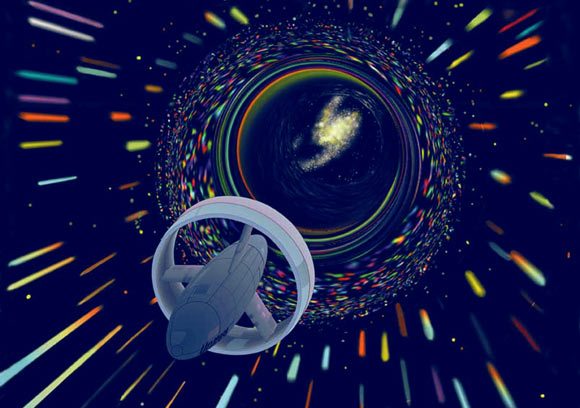Astronomers recently announced the discovery of TOI-700e, a habitable-zone, Earth-sized planet some 102 light-years away in the southern constellation of Dorado. Could this new discovery lead to humans one day traveling to this planet?
Digital art by Les Bossinas, Cortez III Service Corp., 1998.
“That is not going to happen in our lifetimes, but it is fascinating to discuss,” said Professor Hank Pernicka, an expert in spacecraft design at Missouri S&T.
“This planet is nearly 100 light-years away. That means if we developed a spacecraft to go the speed of light, it would still take 100 years to reach this destination.”
“The first issue to consider would be getting a vehicle to reach the speeds necessary for interstellar travel.”
“There would be lots of showstoppers with this, the first of which is even getting that fast.”
“The concept of a light-year and the distance involved in this travel is mind blowing.”
“Another area to consider would be the number of uncertainties with the spacecraft itself.”
“When traveling at these speeds, there would be a large amount of variables to consider. For example, even a little piece of debris in the path of the spacecraft could do a large amount of damage.”
The way in which the spacecraft is fueled would also have to be considered.
Currently, any long-distance missions sponsored by NASA use nuclear power, and that fuel source would eventually be depleted.
For example, NASA’s Voyager 1, which was launched in 1977 and is the only spacecraft to travel to interstellar space, will likely run out of fuel in the next few years.
“Voyager 1 has been on an amazing journey and has blown all of NASA’s expectations out of the water, but this is still nowhere near the distance of even one light-year,” Professor Pernicka said.
The key to one day reaching the necessary speeds may lie in the concept of solar sailing, which would propel spacecraft by using the pressure of the Sun’s radiation.
“Another option may be using a wormhole, but neither option would be a possibility anytime soon,” he said.
“With a wormhole, that would almost be a form of cheating.”
“However, it could theoretically work. In that situation, we would need to develop the spacecraft so it could survive the journey, which could be very violent.”




